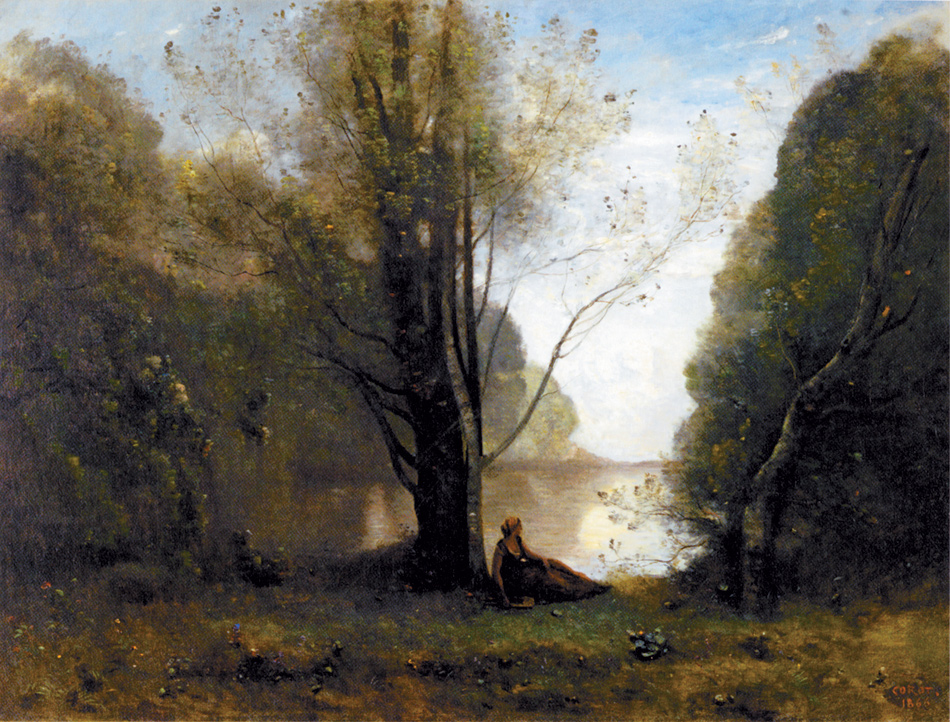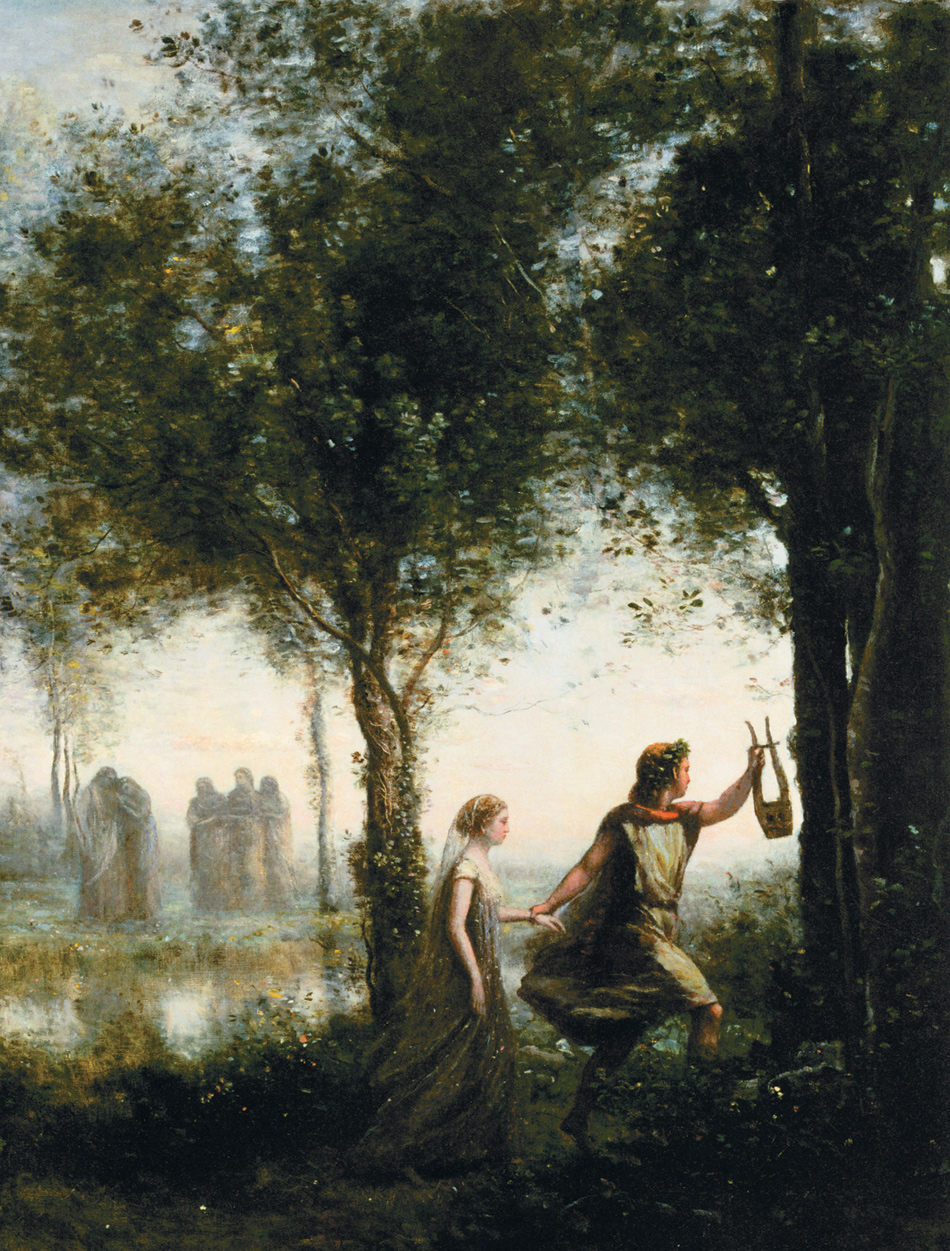Since the fall of the Berlin Wall and German reunification in 1989–1990, the cultural climate of Western Europe has undergone a considerable change. Nowhere is the drop in temperature more noticeable than in the relationship between France and Germany. The aesthetic and social fascination that French literature, art, cinema—indeed, the whole French way of life—exerted upon the western half of divided Germany during the postwar years has faded. As for the French, their reunited, more Central European, more nationalistic neighbor occasionally seems to them like some threatening revenant.
All the more reason to celebrate any cultural event in Germany that reawakens the blissful dream of the old France. The city of Karlsruhe is so close to the border, so near to the charming town of Wissembourg and within easy reach of Strasbourg, that you could almost call it a suburb of Alsace. The court of the margrave who presided in Karlsruhe was already collecting French paintings in the eighteenth century with a confident taste that had no need of aristocratic histrionics; the Staatliche Kunsthalle’s collection of still lifes by Chardin bears witness to that good taste. Its entire collection, in fact, is a smorgasbord of French painting: Poussin and Monet are there, as is Manet—represented not by one of his large, provocative pictures, but by an almost diffident portrait of a boy.
And now the Karlsruhe Kunsthalle has mounted a scrupulously planned exhibition (one is tempted to compare it to a piece of chamber music) that reminds us of one of the purest and most soulful voices in the polyphonic concert of French painting from Delacroix to Cézanne: for the first time in Germany we have a comprehensive show of the work of Camille Corot in all its facets. The catalog lists 203 works. Most are paintings, but the artist’s seldom-exhibited drawings and experiments with printmaking are also on display in cabinets of their own, as well as a few pictures by Corot’s artistic forebears—his teachers Achille Etna Michallon (1796–1822) and Jean-Victor Bertin (1767–1842)—and by such spiritual descendants as Odilon Redon. There is no playing to the gallery in this exhibition, no pedantic tutorials in art history. In a dozen or so moderately-sized rooms, the pictures are hung against white walls and allowed to speak for themselves. The tone is set by evocation of submerged moods tinged with memory and melancholy.
In 1826, the thirty-year-old Corot wrote to a friend that he precluded any sort of marital bond for himself: “I have only one goal in life, which I intend to follow steadily: painting landscapes.” It was a long life—from 1796 to 1875—but without much that would make for an absorbing biography. In Corot’s work there are hardly any traces of the political and social upheavals that shook France from the Consulate of Napoleon I to the founding of the Third Republic or of the modernization ushered in by railroads and factories.
He was born and raised in Paris, in a well-to-do middle-class family that owned a fashionable millinery shop. He spent considerable time living with family friends in Normandy, where he probably had his first encounters with the French landscape. His worried parents long opposed his wish to become a painter, and he was twenty-six before they finally relented and he could begin his training with the Parisian landscape painters I have mentioned. From then until his death at the age of seventy-eight, he remained true to his vocation with unrelenting perseverance and uncompromising dedication. He made three trips through Italy but never had a scholarship to the École de Rome in the Villa Médicis. He did not copy the ancients or the masterpieces of the Renaissance but instead painted urban scenes of Rome, with its monuments and ruins, and above all the landscape and towns of the Roman Campagna. In the glorious history of paintings of Italy by transalpine artists, his pictures occupy an incisive and unmistakable place.
Back home in France, he was constantly on the go right into old age. He painted in all regions of the country and there is probably no other artist who savored the silence, solitude, and bewitching enchantment of la France profonde with equal sensitivity. His views of the provincial landscape that continued to exist in parallel with the restless modernization of Paris have something of Proust’s temps perdu. They remind us of a France that half a century ago one could still discover in many out-of-the-way locations but has ceased to exist today, when the dimensions of the country have been shrunk by expressways and high-speed trains.
At the Karlsruhe exhibition one comes upon a modest experiment from 1822: a small oil on paper showing a view of the broad Normandy plain beneath an open sky in which clouds scud along. There is so much wind and shifting light that for a moment, it feels like an English landscape. It is followed by a Paris scene from 1823: the old Pont Saint-Michel with the towers of Notre Dame rising behind it. With its arches reflected in the waters of the Seine the bridge spans the picture like a hinge. Then a village view from 1825, Le Petit Chaville—a sandy path, some cattle beneath a huge tree, and in the distance, in bright sunlight, a few one-story buildings and a ruin. Corot had discovered the stillness, the peace, and the solitude of the landscape of provincial France.
Advertisement
But first comes the interval of his three years in Italy from 1825 to 1828. The exhibition includes twenty paintings and thirteen drawings from that time. The views of Rome from Monte Pincio to the Isola Tiberina captivate us with their bright, vitreous light. They are all in landscape format, so the monuments and ruins do not overwhelm, but instead offer themselves freely to our examination. Corot’s Roman prospects avoid both the overpowering and the picturesque. He paints the Eternal City as if it were a natural scene, without the burden of its past, its gloom and darkness. Most astonishing is perhaps the view of Monte Pincio with Santa Trinità dei Monti. The cheerful, transparent colors transform the urban prospect into a piece of painted nature.
On the other hand, the grandeur and historic past of the landscape surrounding Rome emerge in Corot’s views of the Campagna. Devoid of human figures, paintings such as the Promenade de Poussin or the Ponte Nomentano possess a somberness that reaches sublime heights in his view of Monte Soracte. A painting of a forest valley near Civita Castellana reveals Corot’s interest in geologic formations of rock and stone. And finally, he ventures upon a theme that already preoccupied ancient writers on aesthetics and later Poussin and Vernet: he paints a large canvas showing the drama of an impending thunderstorm in the Campagna. With what must have been a good deal of pride, he sent this painting to the Salon.
After his return home come the landscapes of rural France. With pictures painted in the forest of Fontainebleau he seems to draw near to the school of Fontainebleau that was flourishing at the time. Yet his pictures of the magnificent trees and rock faces always have a wide open sky above them and thus retain their own character. Soon, he was painting in all the provinces of the country. Taken together, his landscapes of la France profonde practically amount to a painted version of Jules Michelet’s Tableau de La France. We see the summer wheat fields of Morvan, the tower of Saint-Paterne looming over the rooftops of Orléans, the ruins of the castle of Pierrefonds lying forgotten in the forest, and beyond the Seine we catch sight of the choir of the Gothic abbey church of Mantes.
All of these are landscapes of memory, full of an unsentimental, archaeological poetry of precision. Such moods accompanied Corot throughout his life. In his old age, the forms become more blurry and the light more silvery. In the 1866 Solitude, Recollection of Vigen, Limousin, we see a solitary female figure seated among the shadows of the trees, looking out at the reflections of evening light on the lake. Although most of Corot’s landscapes lack human figures, here his theme is not just the recollection of nature, but the strong emotions evoked by its contemplation.
But the souvenirs in Corot’s paintings arise not just from the rural landscapes of la France profonde. By the middle of the century, the archaeological theme had become outmoded and popular taste no longer demanded the so-called voyages pittoresques, atlases containing views of ruins and French folklore from bygone days. The factories and railroads were transforming the physiognomy and accelerating the tempo of the country, and Corot now turns to other sites of memory. In the Salon of 1850, he presented a large painting entitled Morning, or The Dance of the Nymphs. The fluffy crowns of trees stand out against a sky filled with early morning light. In the twilight beneath them, nymphs dance and satyrs raise their goblets in a bacchanal. We hear echoes of the verses of Horace and are reminded of paintings by Claude Lorrain. The plein air painter has become a poet fleeing from the present into the myths of antiquity. Zola, the positivist inventor of the roman experimental, remarked unfeelingly that Corot should have replaced his nymphs with peasant girls. Like many who came after him, he failed to recognize that Corot was not just a landscape painter but a dreamer and a poet.
In the Salon of 1861 he exhibited a painting entitled Orpheus and Eurydice that depicts the underworld as a grove of twilit trees. Between them gleams the Acheron, the river of Hades. Corot drew his inspiration not from previous painters like Poussin, but from Gluck’s famous opera, which he had heard at the Théâtre Lyrique in 1859. Afterward he said, “There is an endlessly enchanting passage in Orpheus. It is the moment when Orpheus finds Eurydice. One feels transported to a heavenly world.” The painting shows the moment when Orpheus begins to lead the reclaimed Eurydice out of Hades. It is an inspiring example of the interplay between poetry, music, and painting.
Advertisement
In Karlsruhe, there is a whole series of late landscapes of mood and dream, the ecstatic Evening Star of 1864, for example, the silvery Memory of Mortefontaine from the same year, or the 1868 Morning, veiled in gray and set in his beloved Ville-d’Avray. As early as 1861, the poet Théodore de Banville had written, “Corot comes from the land of dreams where trees, brooks, horizons are nothing but serene visions, flowing souls that speak directly to our souls.” Only in the last few decades, since the idea of the heroic, victorious advance of modernism has been discredited, have we come to know and admire this poetic Corot.
There is little or no evidence of any erotic eruptions that might have roiled the calm current of Corot’s biography. Female figures do have a curious part, especially in his late works. Early in his career he painted a fisherwoman from Dieppe and an Italian woman from Albano, but those were folkloristic studies that paralleled his landscapes. A voluptuous nude like the Marietta, painted in Rome in 1843—a startling glimpse of precipitous sexual revelation—is a rupture in Corot’s sensuously reserved oeuvre. His later nudes are only a gentle, scenic echo of the frozen, classicist odalisques of the ubiquitous Ingres.
To the end of his life Corot kept for himself—like a precious secret—his most famous female figure. It was probably painted around 1860 and in the catalog of the sale that followed his death in 1875, it is described as a “young woman seated with crossed hands and flowers in her hair.” It bears no name and is thus clearly not a portrait, although the painter did employ a model. But she is not simply some ideal or dream figure. Corot has taken Leonardo’s Mona Lisa—the most mysterious female image of the Renaissance and in the nineteenth century rumored to have been a femme fatale—and dressed her in the rural garments of a contemporary Italian woman from Albano or Genzano while making her face younger and less mysterious. By doing so, he transformed the most enigmatic physiognomy of the art of the past into pure grace and natural comeliness. Or to put it theoretically, with this dream image he overrode the opposition of history and nature that dominated nineteenth-century painting.
In other pictures he places women in his own studio. They sit, gazing meditatively at a Corot work on the easel before them and apparently inspired by the mood of the painting. They hold a book or a stringed instrument; once again, poetry, music, and painting are united. The painter depicts the poetic effect of his own paintings. These are solitary women, alone with Corot’s pictures. One is reminded of a sentence from Gérard de Nerval’s story “Sylvie” (which Norbert Miller compares to Corot’s memory pictures in his informative essay in the catalog): “As our asylum we had nothing but that ivory tower of the poets in which we climbed higher and higher in order to withdraw from the crowd.”
This Issue
December 6, 2012




